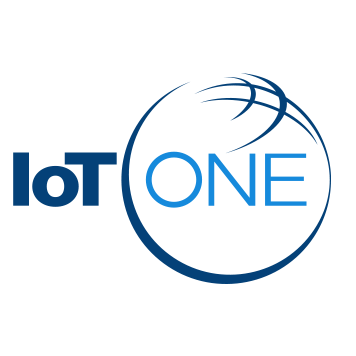Overview
SUPPLIER
MANAGED
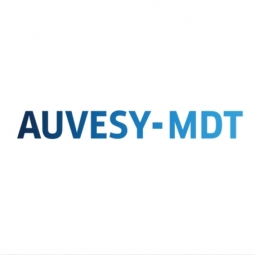 |
AUVESY-MDTWe secure the world's automation |
| Germany | |
| Landau in der Pfalz | |
| 2007 | |
| Private | |
| $10-100m | |
| 51 - 200 | |
| Open website |
IoT Snapshot
Technology Stack
Case Studies
Number of Case Studies13
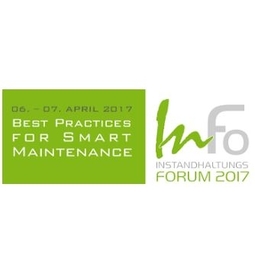 |
New Business Models in Maintenance
Everything that can be automated will be automated, and it is up to us, as people, to learn how to adjust to this development With the advent of the networking of processes and the Industrial Internet of Things, IT has further cemented its place in the production facilities of modern enterprises and is now set to revolutionise the way in which maintenance is approached. The Chamber of Industry and Commerce has its hands full when it comes to making sure that vocational and training concepts both accompany and keep up with these developments. Many employees are anxious, believing that the ongoing digitalisation of the world of work will result in greater job insecurity; a general misconception which regrettably continues to abound. The fact that digitalisation is set to provide both new opportunities and challenges, and that not every workplace is in danger, is often conveniently overlooked in the surrounding hype. It’s as if history is due to repeat itself every time any major industrial revolution occurs. Production workers begin to fear for their jobs and fear of change in the workplace remains high. Nevertheless, production is subject to constant change and we must all learn to adapt. Today, it is IT, in the wake of the IIoT, which stands to replace traditional rosters and blackboards. What’s more, the advent of employees directly communicating with machines via speech in order to reset them is also fast approaching. Voice-control has already gained general acceptance, but an even greater degree of trust in technology is required. If no changes are made to the way you work, the sudden advent of digitalisation may make it appear as though things are out of place or even missing. That isn’t to suggest that there was a time in which IT didn’t exist in the realm of production; such a statement wouldn’t be true, as evidenced by the fact that, in times past, maintenance staff spent an inordinate amount of time making their rounds accompanied by a programmer’s notebook, which had different editors to program components and helped to facilitate communication between human and machine. Nevertheless, the fact remains that the networking of processes continues to generate considerable uncertainty. Customised production The introduction of online marketing has resulted in a large percentage of industrial production being tailored to fit the customer. Affiliate marketing allows you to find out much more about your customers, their behaviour as consumers, and the underlying motives that drive their decision making. Thus, in certain sectors, it no longer makes sense to produce products, place them in storage units, and then wait until they are sold off. Instead, it is becoming the norm to make predictions according to customer decisions or trends. By using information gathered from CRM systems, customer feedback and digital sales statistics, it is possible to determine the colours, form, and features that a customer would desire a future product to have. It is also possible to produce products in such a way that the targeted customer immediately purchases them, thus resolving the need to store the products away until such a time as they are sold. Customised production places high demands on maintenance. Common topics that are frequently brought up in addition to classical and continual improvement processes include: - Preventive Maintenance - Corrective Maintenance - Condition-related maintenance The umbrella term ‘predictive maintenance’ is often used to encompass the topics listed above. Predictive maintenance is a strategy that is based on real-time data taken from production. It permits you to quickly recognise and respond to problems or results which were not visible in the past, but which are now, thanks to new advances in technology (e.g. condition monitoring), immediately detectable. What does the process of networking involve? When surveying a newly digitalised production hall for the first time, the first difference that one notices is that a specific IP address has been assigned to all automated devices connected to the network, which allows for data to be received and sent. These automated devices can be completely different from each other. It does not matter. What does matter (where plant or machine controllers are involved) is the PLC (programmable logic controller). A digital network topology looks as such: sensors, drives, and actuators move things around; robots weld, solder, press and pack; and HMI/SCADA systems supervise the processes. Then there are presses, drills, machine tools, milling processes, and much more. Generally, there is a different editor used to program each type of automated device type. There are very few uniform standards when it comes to software editors and thus automation engineers cannot use the same software to program a wide range of devices. Visual programming languages in DIN EN 61131-3 are regulated, however, each editor has its own special features and they are seldom compatible. Editors continue to be further developed if only for the purpose of continuously updating them to support current operating systems. Software developers are eager to offer their customers ongoing updates, the reason for which lies in the fact that customers do not have any reason to pay for software editors that have reached the end of their development. They will only pay for new developments. For maintenance staff, this trend necessitates them to undergo constant further training in order to understand and implement the latest functions and features brought out by the software developer. In that regard, it is interesting to note that, even as the number of people present in the production hall continues to decline, the number of maintenance staff continues to grow. This stands in stark contrast to the hype about the human factor becoming an obsolete element when it comes to production; on the contrary, the human factor will continue to grow in importance, especially when it comes to fixing unplanned malfunctions and errors that may occur to the complex machines and systems during production. All visions involving the future state of digital production thus have one thing in common and that is the fact that people will continue to play a vital role: the ability to understand the complex connections between numerous machines, controllers and programs, will continue to be a sure-fire guarantee of success. |
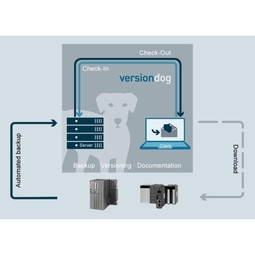 |
Process Control System Support
In many automated production facilities, changes are made to SIMATIC PCS 7 projects on a daily basis, with individual processes often optimised by multiple workers due to shift changes. Documentation is key here, as this keeps workers informed about why a change was made. Furthermore, SIMATIC PCS 7 installations are generally used in locations where documentation is required for audits and certification. The ability to track changes between two software projects is not only an invaluable aid during shift changes, but also when searching for errors or optimising a PCS 7 installation. Every change made to the system is labour-intensive and time-consuming. Moreover, there is also the risk that errors may occur. If a change is saved in the project, then the old version is lost unless a backup copy was created in advance. If no backup was created, it will no longer be possible to return to the previous state if and when programming errors occur. Each backup denotes a version used by the SIMATIC PCS 7 system to operate an installation. To correctly interpret a version, information is required on WHO changed WHAT, WHERE, WHEN and WHY: - Who created the version/who is responsible for the version? - Who released the version? - What was changed in the version i.e. in which block or module of the SIMATIC PCS 7 installation were the changes made? - When was the version created? Is this the latest version or is there a more recent version? - Why were the changes made to the version? If they are part of a regular maintenance cycle, then is the aim to fix an error or to improve production processes? - Is this particular version also the version currently being used in production? The fact that SIMATIC PCS 7 projects use extremely large quantities of data complicates the situation even further, and it can take a long time to load and save information as a result. Without a sustainable strategy for operating a SIMATIC PCS 7 installation, searching for the right software version can become extremely time-consuming and the installation may run inefficiently as a result. |
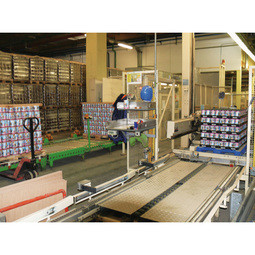 |
Versiondog Comes for Coffee
“Well before it went live, we had worked out a clear plan for exactly how we were going to use the new versiondog versioning and data management software from AUVESY,” says Michael Mrugalla, who works in process automation at the Mainz plant. “We also had to think about what backups really meant for us. With all our field devices, control programs, drive systems, programming languages, file formats and software applications, we needed to know precisely what we have to back up in case a breakdown (e.g. a power outage) stops production. Because the whole point of making a backup is to be able to recover data quickly and easily when something goes wrong and continue working as if nothing had happened. But that means more than simply restarting production, it also means we need to be able to pick up where we left off with our ongoing process maintenance and optimisation.” It was particularly important to Nestlé that their backup strategy be built around a sin-gle continually active and universally appli-cable solution. And they wanted it to maintain a centralised backup of all the data necessary for both recovery and further development for all devices and all related projects (i.e. every piece of hardware and software). And the programs actually running on controllers need to correspond precisely with the data on the server. If not, the reason must be easily identifiable and the valid version always available to be reloaded onto the device. |
Similar Suppliers
Number of Similar Suppliers4
 |
Altair
Altair is a leading provider of enterprise-class engineering software enabling innovation, reduced development times, and lower costs through the entire product lifecycle from concept design to in-service operation. Our simulation-driven approach to innovation is powered by our integrated suite of software which optimizes design performance across multiple disciplines encompassing structures, motion, fluids, thermal management, electromagnetics, system modeling and embedded systems, while also providing data analytics and true-to-life visualization and rendering. |
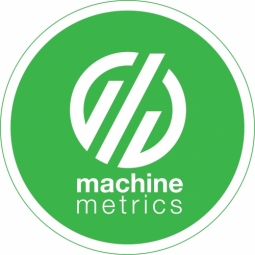 |
MachineMetrics
MachineMetrics is the authority on real-time manufacturing analytics. When we started MachineMetrics, we identified undeniable gaps in current manufacturing processes: a lack of real-time production visibility and a lack of communication between machine operators and their managers. Roughly 50% of US companies admitting to not having a systematic roadmap toward Digital Manufacturing solutions nor automation and over 90% of companies have yet to attempt to integrate solutions to date. Many companies have attempted to develop solutions for this problem but it had yet to be truly solved. We spoke with 100+ manufacturers to gather their feedback on why these solutions did not fit their needs and how it could be designed better.MachineMetrics was thus created; an IIoT manufacturing analytics and machine monitoring platform to help companies visualize where they stand now and overcome the challenges along the Digital Transformation journey to advance forward from reactivity, to proactivity, and to predictivity. Our fully automated machine monitoring solution provides visualizations of real-time manufacturing production data, instant notifications, as well as historical analytics, allowing factory workers to make faster, smarter, more confident decisions based on real-time data.We've simplified IoT for the shop floor and are empowering manufacturers to develop their roadmap toward manufacturing excellence with the easiest to use and simplest to integrate software on the market. MachineMetrics is driving manufacturing efficiency by more than 20% on average for our customers and we are proud to be developing the future of manufacturing alongside them. |
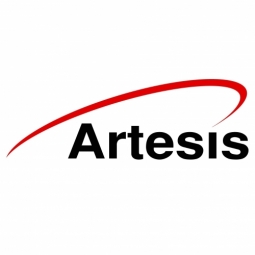 |
Artesis A.S.
Artesis manufactures a range of intelligent condition monitoring products including the Motor Condition Monitor (e-MCM), Plant Condition Monitor (e-PCM) and Portable motor-driven test system (AMT Pro) instruments, and the Artesis Enterprise Server (AES) software package. |
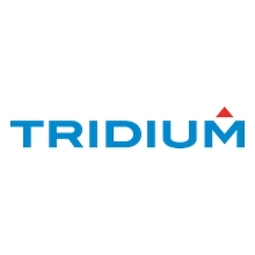 |
Tridium (Honeywell)
Tridium is a framework, software, and services company helping users of embedded devices to harness the power of the Internet and the latest technologies. An established leader in software technology, Tridium works closely with international manufacturers and other software companies. For more than 15 years, their open framework has enabled and grown the Internet of Thing. For more than 15 years, Tridium’s Niagara Framework has fundamentally changed the way devices and systems connect. In 77 countries, from leading corporations to the latest startups, a large and active community has formed around Niagara. Niagara is a proven technology that provides an integration framework for systems and devices across markets and around the world. Working with collaborators such as Oracle, QNX Software Systems and other technology leaders, Tridium is at the center of dynamic alliances that are pioneering the Internet of Things. As the IoT market continues to expand, Tridium is actively engaged in creating new collaborations with important organizations in a range of industries. |
Partners
Number of Partners11
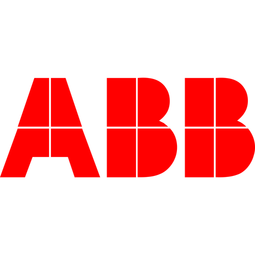 |
ABB
ABB is a global leader in power and automation technologies. Their solutions improve the efficiency, productivity and quality of their customers’ operations while minimizing environmental impact. |
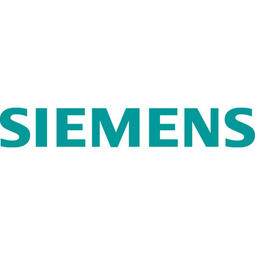 |
Siemens
Siemens is the largest engineering company in Europe. With their positioning along the electrification value chain, Siemens has the knowhow that extends from power generation to power transmission, power distribution and smart grid to the efficient application of electrical energy. Featured Subsidiaries/ Business Units: - Digital Factory - Siemens Technology to Business (TTB) |
---nyse--ge_1.jpg) |
General Electric
GE is a diversified specialty equipment, infrastructure and financial services company. Their products and services range from aircraft engines, power generation, oil and gas production equipment, and household appliances to medical imaging, business and consumer financing and industrial products. GE believes new technologies will merges big iron with big data to create brilliant machines. This convergence of machine and intelligent data is known as the Industrial Internet, and it's changing the way we work. Year founded: 1892 Revenue: $148.5 billion (2014) NYSE: GE Featured Subsidiaries/ Business Units: - GE Digital - GE Predix - GE Intelligent Platform - Wurldtech |


